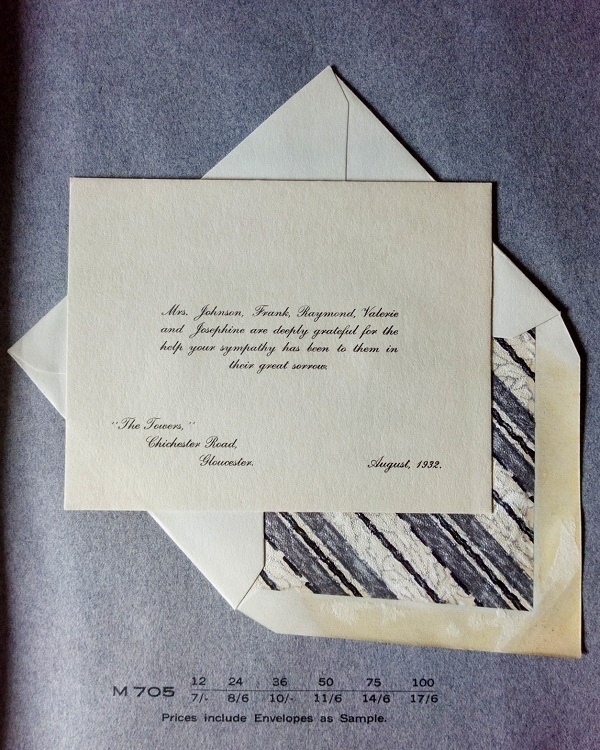Return Thanks
It’s 1932, and Mr. Johnson has died suddenly in Gloucester. His grieving widow and four children have received many dozens of letters of sympathy and numerous floral tributes in the wake of his decease, for each of which etiquette demands a timely note of thanks in reply. Mrs. J. just doesn’t have it in her to tackle this onerous task - but, thankfully, there are services which will supply pre-printed responses in bulk, thereby enabling the family to adhere to the letter of the law of etiquette, if not quite its exacting spirit.

Recently I obtained (via ebay) a sample-book of such pre-printed messages including the example above. On the cover is the text Sharpe’s “Classic” / Return Thanks Stationery / British Manufacture, where Sharpe’s were the manufacturers providing the paper, cards and envelopes; and ‘Return Thanks’ (I presume) their service run in co-operation with participating printers, to supply the requisite personalisation. Loosely held in the book was some documentation relating to The Manor Press Ltd., Colchester, apparently the printers who had owned and used the book. Similar sample books would doubtless have been available for weddings, etc.
A range of paper styles & tints were on offer: hand-made off-white paper with deckle edges; white cards with Victorian-style black borders, or else un-bordered or edged with silver or grey; and also paper in a pale lavender shade, which I thought an odd choice until I learned that lavender/mauve was once recognised as a secondary colour associated with mourning. Some of the envelopes have surprisingly gaudy linings, as in the one above.
The forms of words in the samples are generic: customers may have fallen back on such standard phrasing or would have had the option to supply their own text. In a couple of cases the samples explicitly state that the bereaved “find it impossible to answer letters personally”, by way of explanation for the impersonality of a ready-made reply. In terms of the lettering used, script faces predominate, with sans serif and ‘Old English’ styles the other main options.